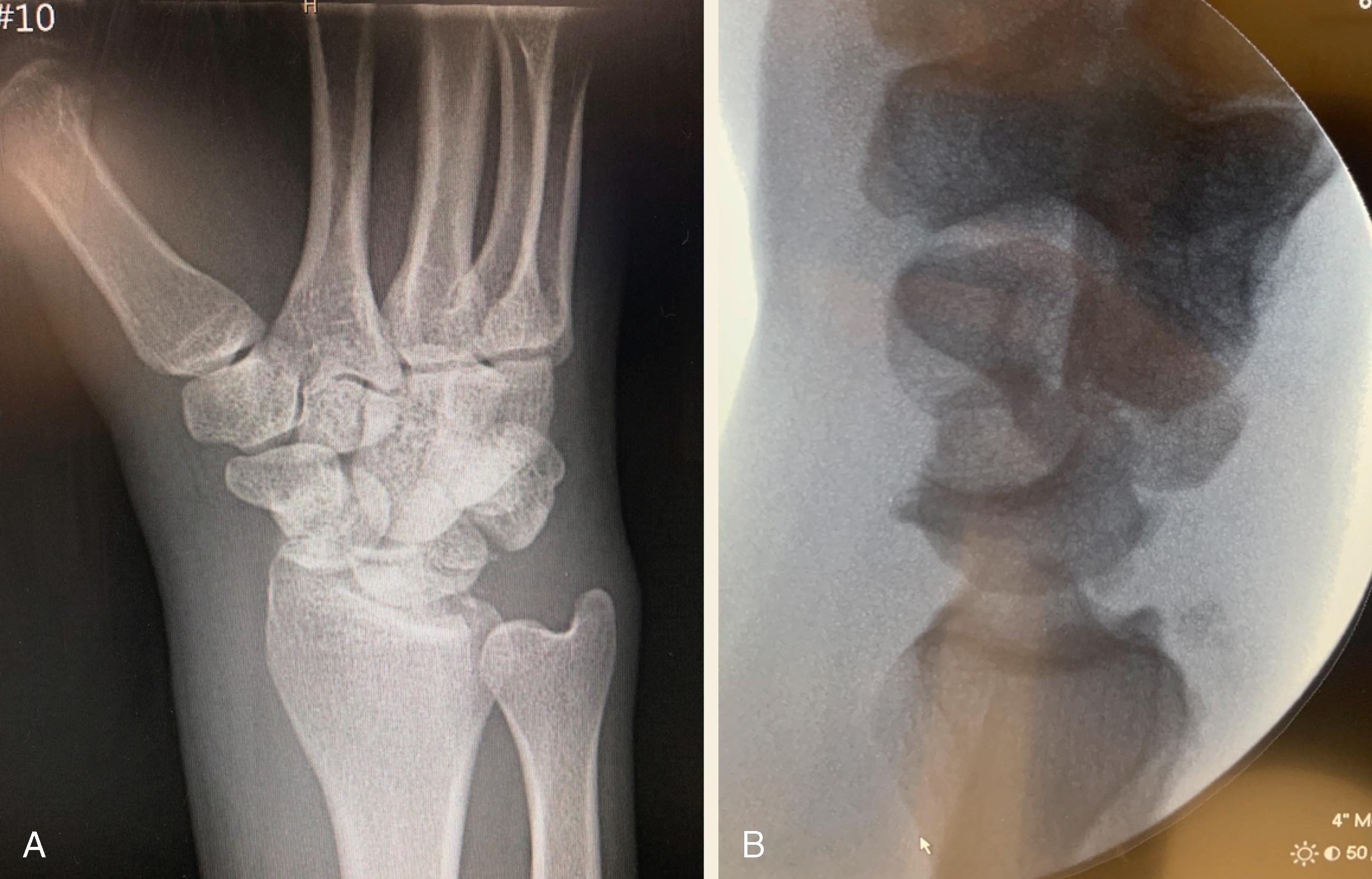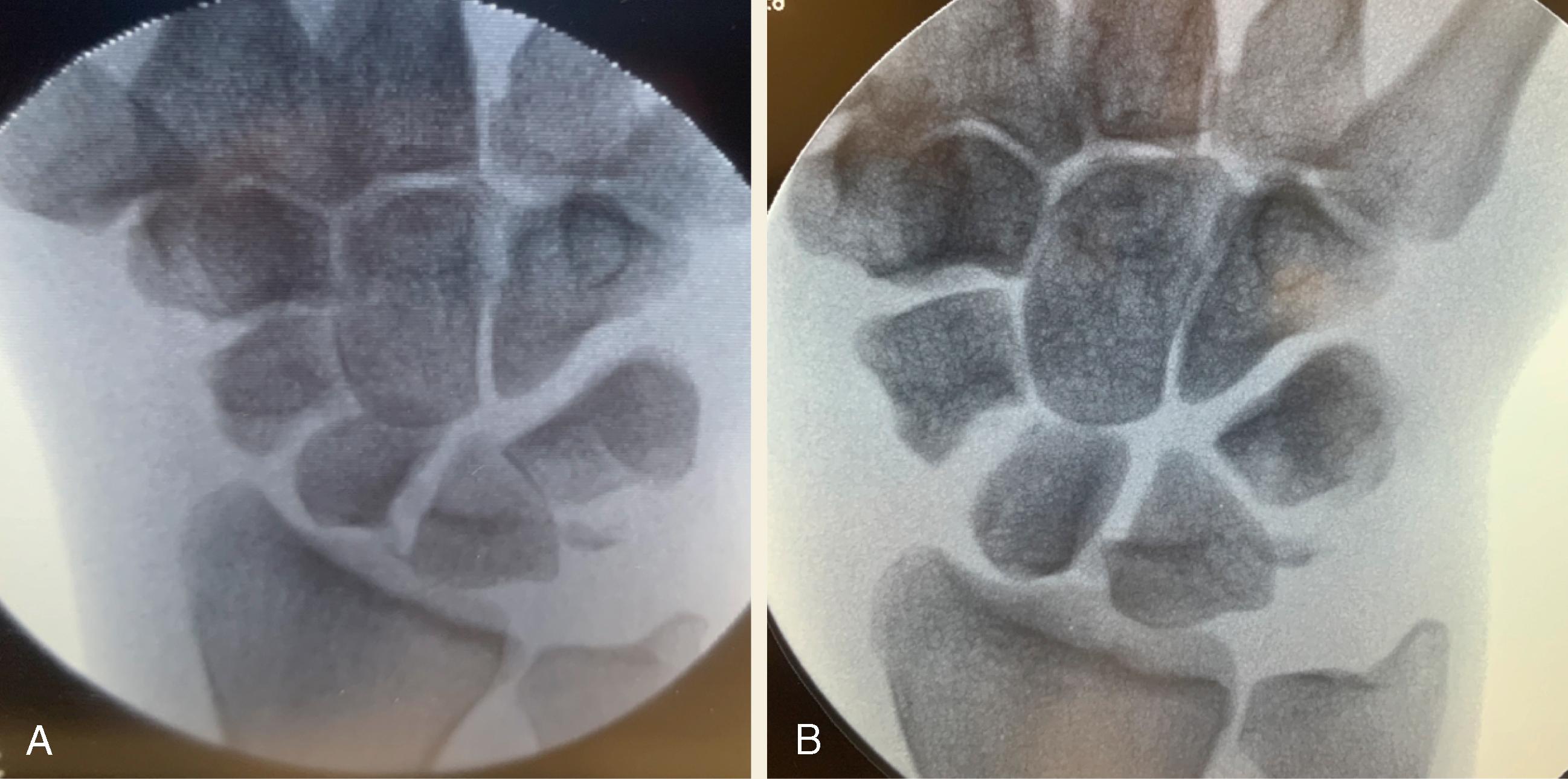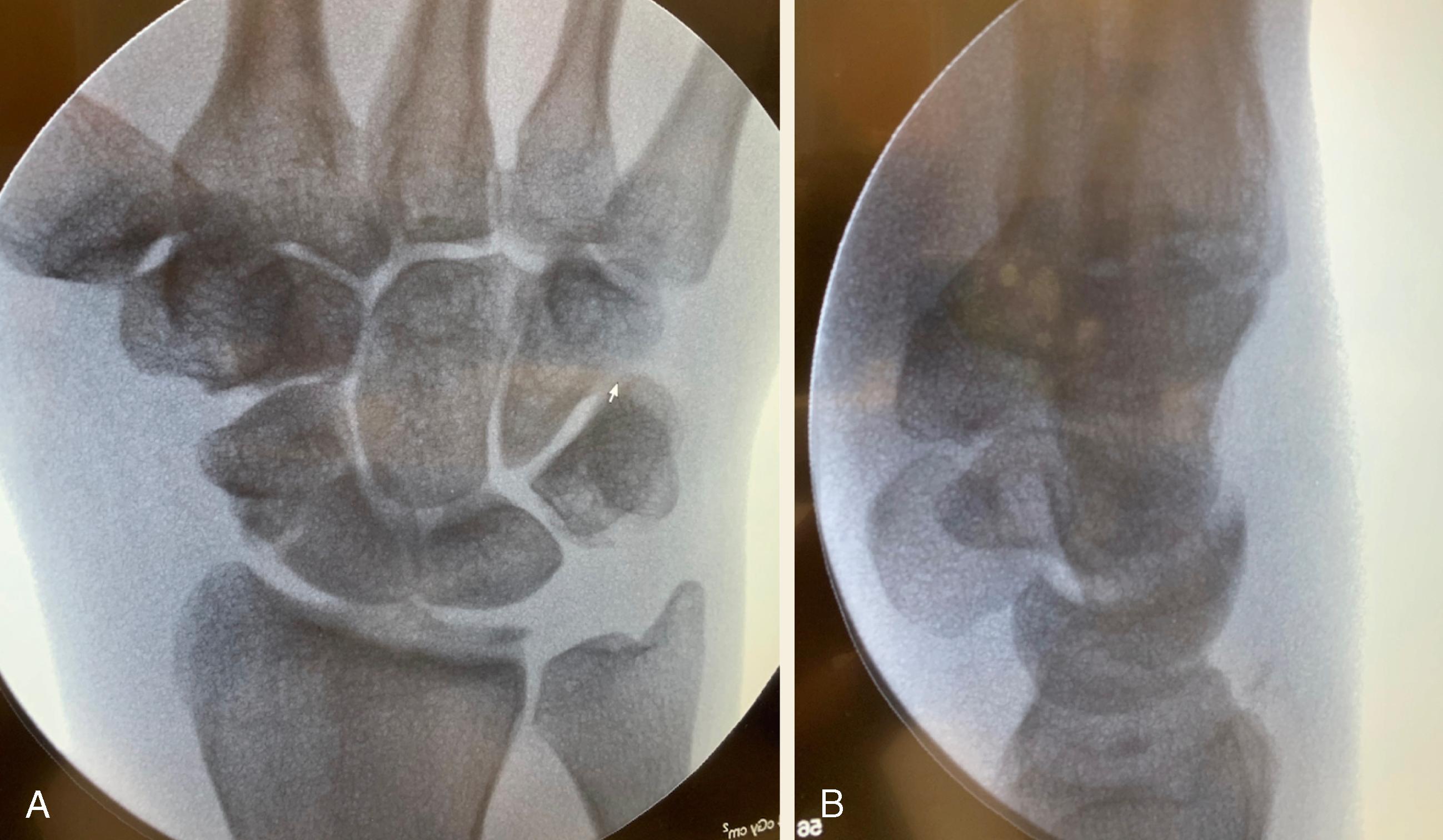Physical Address
304 North Cardinal St.
Dorchester Center, MA 02124
Treatment of perilunate injuries may be accomplished via a number of different approaches. Open repair of perilunate injuries can be accomplished via an all-dorsal, all-volar, or combined dorsal and volar approach. Due to the complexity of some ligamentous disruptions and the carpal relationships, many recommend a combined two-incision approach. In the combined volar-dorsal technique, the volar approach is used for reduction of the lunate, carpal tunnel release, repair of the volar capsular tear, and repair of the volar lunotriquetral ligament. The dorsal approach is used for repair of the scapholunate interosseous ligament and/or treatment of a scaphoid fracture in the case of trans-scaphoid injuries. Most injuries may be adequately addressed with a dorsal approach alone, images of which are included.
Indications for open management of perilunate injuries are very similar to those for perilunate injuries in general. That is, because of the poor outcomes of closed reduction and casting alone, all patients with Mayfield III/IV injuries should be managed operatively. Patients with all Herzberg stages may be treated via an open approach ( Fig. 73.1 ).

Timely diagnosis and treatment of perilunate injury is critical, as up to 25% of injuries are missed. Closed reduction of the dislocated distal row and lunate should be attempted immediately after adequate sedation and relaxation are achieved ( Figs. 73.2 and 73.3 ). Assessment of any median neuropathy is mandatory. Dense, progressive median neuropathy that persists after reduction should prompt consideration of emergent surgical decompression of the carpal tunnel.


Standard four-view radiographs of the wrist (posteroanterior [PA], lateral, semipronated, and scaphoid views) are typically all that is required for the diagnosis of a perilunate injury. Disruption of Gilula’s lines and a change in the configuration of the lunate on PA view from trapezoidal to a wedge or triangular shape indicate carpal derangement. Computed tomography or magnetic resonance imaging may better characterize carpal displacement and ligamentous injury, although neither is necessary prior to reduction and repair.
Anesthesia of the wrist is achieved via regional block of the brachial plexus. The patient is positioned supine on the operating room table, with a standard hand table positioned with the shoulder at the midpoint of the table. An upper arm tourniquet is applied and the hand is prepped and draped. A standard power setup with 0.045- and 0.062-inch K-wires is required. A headless compression screw set is necessary for trans-scaphoid injuries.
Become a Clinical Tree membership for Full access and enjoy Unlimited articles
If you are a member. Log in here